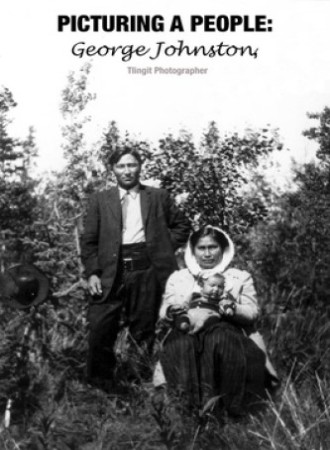
Picturing a People: George Johnston, Tlingit Photographer 1997
Distributed by National Film Board of Canada, 1123 Broadway, Suite 307, New York, NY 10010; 800-542-2164
Produced by the National Film Board of Canada in coproduction with Nutaaq Media Inc. and Fox Point Productions
Directed by Carol Geddes
VHS, color and b&, 50 min.
High School - Adult
Anthropology, History, Sociology
Date Entered: 11/09/2018
Reviewed by Rue Herbert, Head, Library Media Resources, University of South Florida, TampaPicturing a People: George Johnston, Tlingit Photographer offers the viewer a glimpse of the culture of indigenous Alaskans through the eyes of one of their own. George Johnston was born of high rank in his clan around the turn of the century. As a young man, Mr. Johnston taught himself photography, which ultimately enabled him to record the "golden age" of his people. Through interviews with family members, archival film footage, contemporary scenic views, dramatizations, and many of Mr. Johnston's photographs, we learn of the daily lives of the Tlingit and the man who recorded their culture.
George Johnston was an enterprising and motivated young man. His lucrative fur trade allowed him contemporary opportunities, such as the purchase of the first car in his hometown of Teslin. At the same time, Mr. Johnston deeply felt the importance of preserving the traditions and history of his ancestors, and his photographs reflect the overall cultural philosophies of the Tlingit.
There is discussion of the negative impact of Western influence upon the Yukon area. In the 1930s missionaries arrived and during World War II the American military built a supply highway. The competition for spiritual allegiance, the introduction of disease, and the lack of support for the native culture ultimately eroded the indigenous way of life. The program includes disturbing footage of American soldiers hunting for sport and treating the Tlingit people as strangers in their own land.
Amid the Tlingit societal decline after 1945, George Johnston gave up photography. However, his images have served to provide inspiration and knowledge for a new Tlingit generation, who successfully campaigned for self government in the 1970s.
Picturing a People: George Johnston, Tlingit Photographer was produced with very high technical standards, and offers an introduction to the Tlingit within their cultural context. The program focuses upon the biographical portrait of Johnston, while providing general historical detail. The program is appropriate for a wide range of viewers, and is recommended for school and public libraries, as well as academic libraries for supplemental support of curricula in anthropology, history, and sociology.